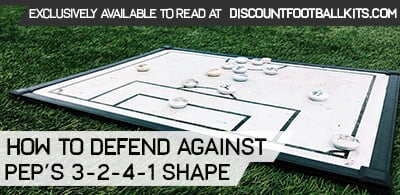Recency bias is something that often distorts football analysis, with records achieved prior to 1992 and the advent of the Premier League often disregarded by younger fans. Similarly, currently players and managers are often afforded reverential and disproportionate levels of respect, especially when compared to those from previous generations.
Take Pep Guardiola, for example, who is now frequently lauded as the Premier League’s greatest ever manager despite not yet exceeding Sir Alex Ferguson’s achievements or matching his incredible longevity.
One reason often given to justify this is Guardiola’s greater tactical nous and influence, which has contributed greatly to his own success while also inspiring a whole new generation of coaches. However, for all of his undoubted brilliance, the Spaniard has built much of his own tactical philosophy on former innovators including Johan Cruyff and Louis Van Gaal.
Pep’s deployment of a highly structured 3-2-4-1 offers a relevant case in point, especially in terms of adopting a wide back three in possession and pushing one defender into midfield to play as a modern-day libero. This affords his side greater control, flexibility and central overloads during attacking phases of the game, while enabling them to transition to a more compact 4-5-1 when they’re out of possession.
This tactic has proven highly successful to City’s historic treble, while proving difficult for opponents to counter. In this blog post, we’ll take a look at the best ways of defending against the 3-2-4-1 and how to launch effective counter attacks.
Play with a Back Three or Five
One team that came close to stopping City during their treble bid was Inter Milan, who were narrowly defeated 1-0 in the recent UEFA Champions League final. They played superbly at the Atatürk Olympic Stadium in Istanbul, with their compact and aggressive iteration of the 3-5-2 formation at least partially negating City’s effectiveness.
There are several reasons for this, as the shape allowed at least one centre back to remain tight to Erling Haaland, while the other two engaged in zonal marking and restricted opportunities for Ilkay Gundogan and Kevin De Bruyne in the half spaces.
The wing backs (in this case Denzel Dumfries and Federico Dimarco) were then able to go man-for-man against Jack Grealish and Bernardo Silva respectively and deny them space in wide areas. Dimarco was particularly aggressive on Inter’s left hand side, and provided a constant outlet during attacking transitions.
The three-man midfield also worked tirelessly to compress space and deny City the opportunity to create central overloads, while Inter’s front two were able to press aggressively (and effectively) from the front and block passing lanes further forward. So, there’s no doubt that a well-organised and compact 3-5-2 shape can be effective when countering the 3-2-4-1 formation, especially when teams are willing to go man-for-man and mark aggressively in different areas of the pitch.
Play With Attacking Width
Because the 3-2-4-1 formation is defensively narrow, City tend to leave considerable space in the full back areas when constructing attacks.
This space can be exploited immediately after the side loses possession, by opponents who are willing to launch quick and direct switches of play and able to execute these accurately.
This will either release a wide forward into space behind the defensive line or isolate them against their opposing defender, creating a constant outlet for counterattacking and arguably making it easier to retain possession higher up the pitch.
Of course, this requires you to play with genuine attacking width, with wide forwards staying as high as possible and hugging their respective touchlines. You could aid this by starting with a 4-5-1 formation, which includes three mobile central midfielders to help cover the space left behind your wingers.
Consider a Compact 4-4-2
At this stage, it’s clear that defending in a compact shape and with a relatively deep defensive line is key when countering the 3-2-4-1, although you’ll need to have clearly defined pressing triggers and close down the ball tenaciously during specific phases of play.
In terms of your preferred shape, another option is to adopt a narrow 4-4-2, which can make use of a mobile and deep lying striker to provide an additional body in midfield. Similarly, this could comprise a diamond shape when looking to maintain possession, as the strikers split to threaten in the channels.
A narrow and compact 4-4-2 can be difficult to play through, while you can also advance at least one wide midfielder during attacking transitions and when looking to switch player. The wide midfielder on the other flank can then tuck in, ensuring that the side isn’t caught out should they turn over possession.
As with the other formations referenced here, a 4-4-2 allows a little tactical flexibility both in an out of possession, but the key is that it you’re able to attack the space left by your opponents and offer a continual threat in transition.










